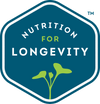Sugar Cravings and Taste Buds
Have you ever wondered about the connection between your taste buds and your brain? Well, this connection is what informs us of which foods we prefer to eat and which foods we may not particularly enjoy. More importantly, it can affect the type of foods we crave on a daily basis. Dive deeper into this topic with Nutrition for Longevity by discussing both taste buds and dopamine.
Taste Buds. What Are They?
Taste buds are found on the tongue in small bumps called papillae. They help detect all kinds of flavors, from sweet, to salty, to bitter, and umami.1
Our sense of taste has evolved over millions of years to help us choose which foods to eat. Choosing what foods to eat is not only a matter of preference, but safety, and health. Historically, taste buds were the way that the primitive brain identified the taste of toxic foods from nontoxic. Nowadays, we see that taste bud’s role in deciding foods is essential for maintaining energy balance and battling poor nutrition.
When food touches the tongue, cells on the tongue sense the specific tastes and transmit signals to larger nerves called cranial nerves.6 Cranial nerves carry taste sensations to the brain. Some signals may trigger areas that control emotions and memories while other signals may cause you to remember and crave certain flavors.

“Taste Signals Diagram” 6
What is Dopamine?
Dopamine is a chemical messenger that plays a large role in motivation and reward. The release of dopamine can happen when we eat foods we enjoy. The brain associates certain substances, such as sugar, with a rush of dopamine. That is why sugary foods can be so addicting.2
This is important because over time, a person’s dopamine system can become less sensitive. After prolonged exposure to certain substances, our dopamine systems can become less reactive, creating a higher threshold we need to achieve to feel the impact of dopamine. When our system becomes less sensitive to certain dopamine-inducing foods, we often find ourselves consuming more of the food to experience the same ‘big rush’ of dopamine that used to be experienced from a smaller amount of food.2
Over time, the brain may become very dependent on these outside sources, such as sugary foods, to fill the dopamine production. This is called dopamine downregulation.3
Removing Sugar From Our Diet
When we remove added sugar from our diet, dopamine downregulation begins to reset. There is a decrease in dopamine production, which may cause depressed mood and cravings. The bright side is that our taste buds reset as well. In turn, food cravings begin to change once refined and processed sugars are removed from the diet.
When sugary items are replaced with whole fruits, vegetables, grains, and legumes, the body minimizes cravings for sugary foods and begins to crave healthier items.4
Why should we care? When we improve our diet, we are also improving our health span as well as our mental and physical health.

“FDA Nutrition Label”7
Tip: Use nutrition labels as a guide. They can provide information on the amount of sugar in the food you are consuming. Limiting added sugar is important to maintaining a healthy diet.
At Nutrition for Longevity, we take pride in our wholesome ingredients. Many of these ingredients can help stop sugar cravings and keep us full and satisfied. Some of these foods include:5
- Protein sources such as fish and legumes
- Berries and heart healthy nuts
- Vegetables such as sweet potatoes, broccoli, and butternut squash
These ingredients can be found in our N4L’s meal plans as well as our Produce Boxes and Recipes.
Overall, taste buds have a great responsibility in letting our brain know the foods we like and dislike. It is important to consume healthful and wholesome foods to train our taste buds and brain to enjoy and crave these foods. Cutting out added sugar can be difficult, but the benefits on food cravings are rewarding. Who wouldn't want to crave Nutrition for Longevity's wholesome meals and fresh ingredients? Get started with our meal plans today!
References:
- FACTS Network. The Science of Taste. IFIC Foundation. Published October 10, 2018. https://foodinsight.org/the-science-of-taste/
- What’s the Difference Between Dopamine and Serotonin? Healthline. Published 2018. https://www.healthline.com/health/dopamine-vs-serotonin
- Eating Excess Sugar Is Worse for You During COVID-19: 6 Ways to Cut It. Healthline. Published November 6, 2020. Accessed February 4, 2021. https://www.healthline.com/health-news/eating-excess-sugar-is-worse-for-you-during-covid-19-6-ways-to-cut-it#Why-excess-sugar-is-risky-during-pandemic
- Sugar Detox: Symptoms, Side Effects, and Tips for a Low Sugar Diet. Healthline. Published July 28, 2020. Accessed February 4, 2021. https://www.healthline.com/health/sugar-detox-symptoms#side-effects
- 19 Foods That Can Fight Sugar Cravings. Healthline. Published January 8, 2018. https://www.healthline.com/nutrition/foods-that-fight-sugar-cravings
- Authors Kelly Stanford, Authors Caren Rodriguez-Medina, Authors George R. Mangun, Authors Tali Leibovich. Taste: Links in the Chain from Tongue to Brain. Frontiers for Young Minds. https://kids.frontiersin.org/article/10.3389/frym.2017.00033. Accessed February 5, 2021.
- Center for Food Safety and Applied Nutrition. Added Sugars on the New Nutrition Facts Label. U.S. Food and Drug Administration. https://www.fda.gov/food/new-nutrition-facts-label/added-sugars-new-nutrition-facts-label . Accessed February 5, 2021.




